

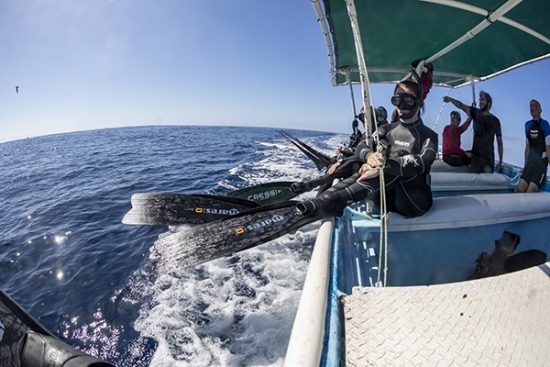
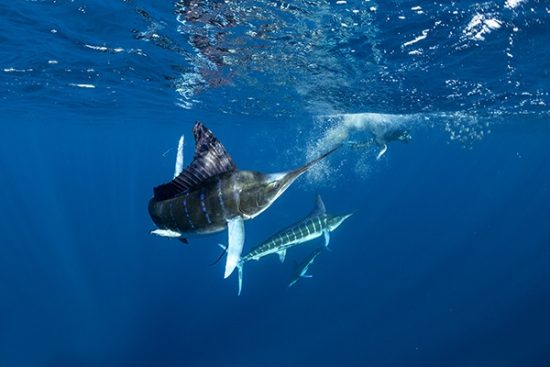
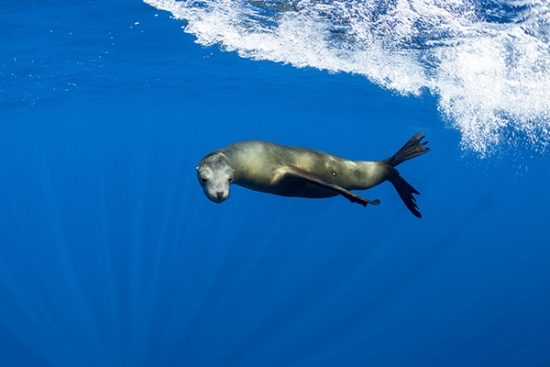
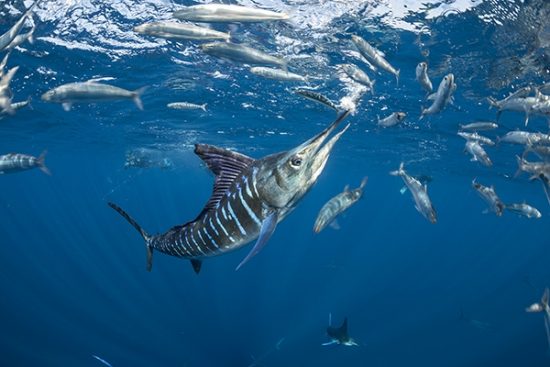
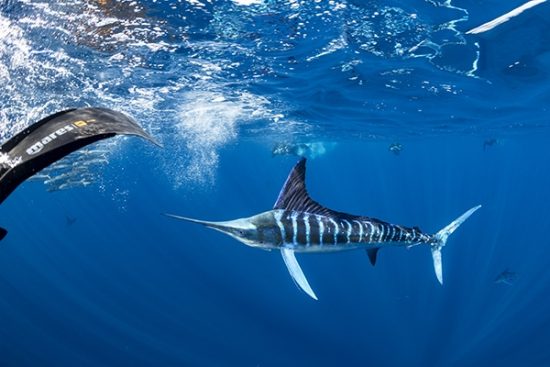
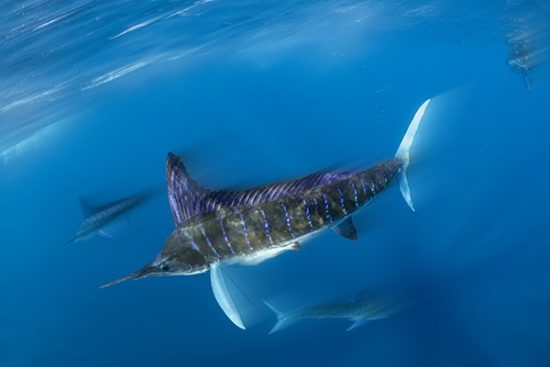
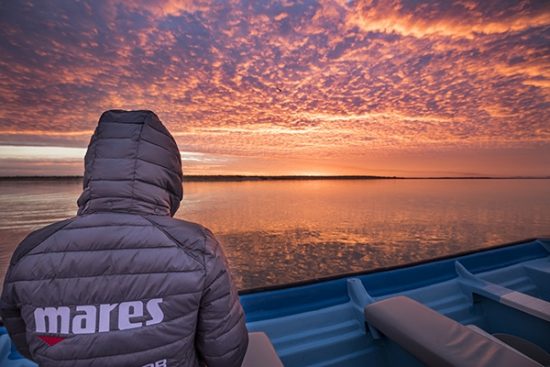
I’ve always been fascinated by Striped Marlins and wanted to take on the challenge of documenting some of their unbelievable behaviour. Being a photographer, I’m interested in their ability to change the colour pattern of the 12-16 blue vertical bars in just the blink of an eye as they light up from regular blue to a phosphorescent blue or lavender via the contraction or expansion of chromatophores (special pigmented cells).
Being a diver and a swimmer, I’m fascinated by their capability to swim large distances at a speed up to 80 km/h, third after the blue marlin (130 km/h) and the sailfish (110 km/h), via the anatomy of their bodies and their elongated tail lobes which reach undisturbed water beyond the turbulence created by their bodies, but, since I’m not an expert, I didn't understand very much about them.
Striped marlin swim thousands of kilometres and are found in vast tropical and subtropical oceans. They feed on the fastest prey species and have incredible anatomy and physiology.
My imagination started to travel: What would it be like to be in the water with these apex predators? How would they react to my presence in the water?
Having said that, I took the first flight to Cabo San Lucas and drove to Magdalena Bay, a small fisherman's village on the Pacific coast of Baja California. Thirty to forty miles outside in the Pacific Ocean there is a place which is well-known among fishermen for the fish pileup. The phenomenon varies from year to year, but often reaches truly amazing proportions, centered on the month of November, when the density of striped marlin can climb into the double-digit range per day. There is no other high-volume striped marlin action like this anywhere else in Mexican waters. I went to the place with a local “panga”, guided by an expert skipper, to see the event.
It was not long before our captain showed us a bait ball with striped marlins and invited us to enter the water. My heart was pounding, the water was blue and visibility was excellent, there were a lot of lights in the water, I could see the blue marlins swimming inbetween me and my buddy like a rocket.
Below us the deep blue, small fish flicking like shadows. I have to swim and be fast to frame and freeze the movement. The blue marlins feed on large bait-balls of sardines on the surface, assaulted by frigate and marine bird squadrons from the air. If you don’t have the right person who spots the right area in which you can safely swim, then the game is over in a blink of an eye.
The bait-balls can disperse, and so do the marlins; the surface can be rough and you will never be in the right position to shot pictures, since the scales of the fish reflect the sun beams ; you might find yourself too close to the bait-ball, putting you in danger to be injured by the fish. But when everything is perfect, you will see striped marlins working alongside sea lions and sometimes sailfish, Mahi-mahi and tunas, to push the bait-balls to the surface before hunting together is awe inspiring. The action is unreal and hard to really put in to words.
Striped marlins are a surface-dwelling species, and spend the majority of their time at the “azul” surface of the crystal clear waters. This room is something that I’ve always been fascinated by, together with mostunderwater photographers specialized in “wide angles” pictures. It is by far the largest aquatic biome in terms of volume. Nevertheless, in comparison to many other biomes, it seems to be a desert. On the surface, we will never have the guarantee to find subjects and / or we will find animals that are really wild, fast, shy, hypersensitive. Often we have only one ops to take “The Picture” : a true challenging and thrilling environment.
 Franco and Sabrina
Franco and Sabrina 6th December 2019
6th December 2019